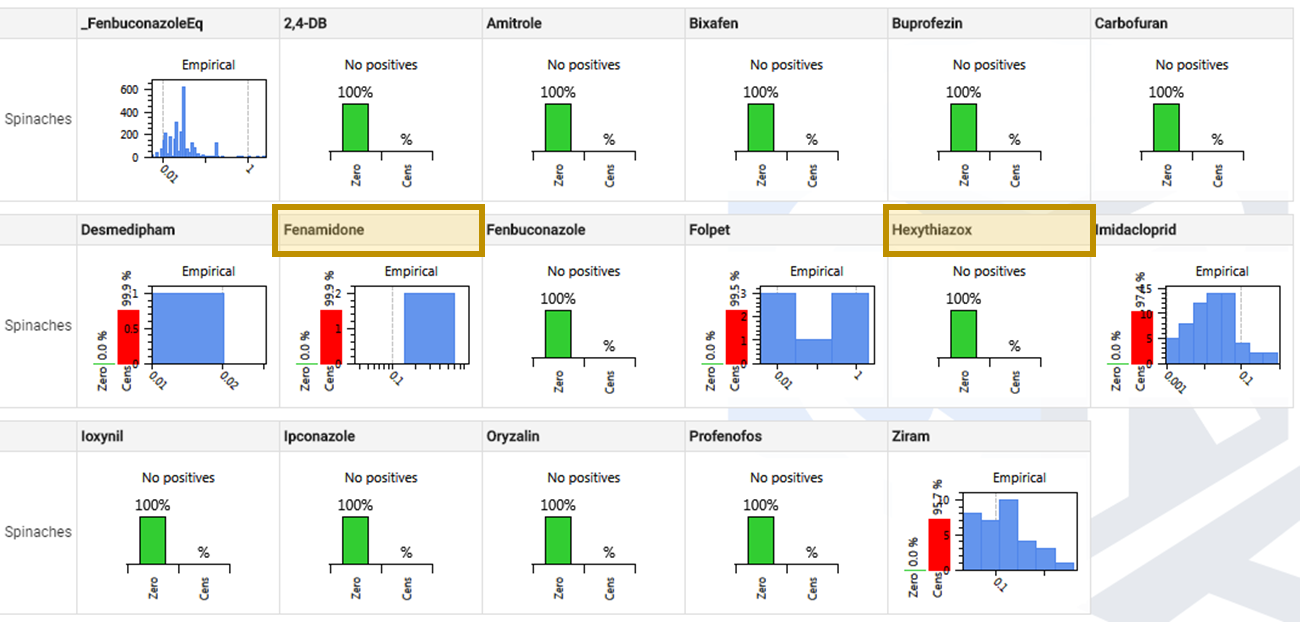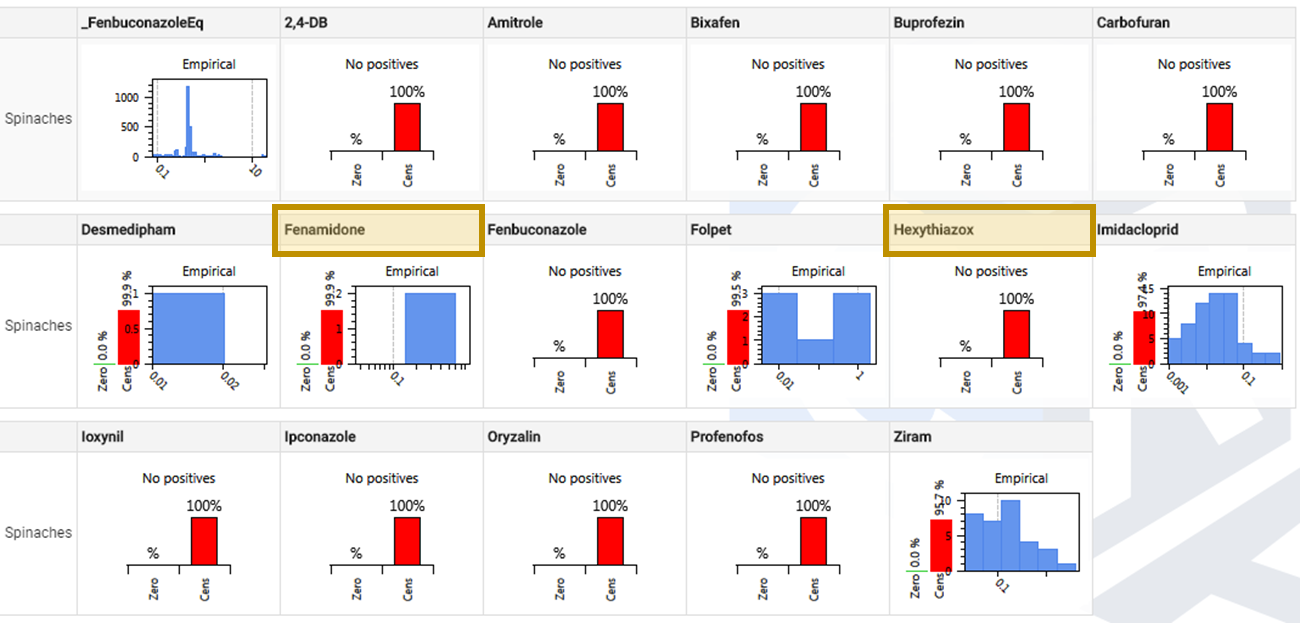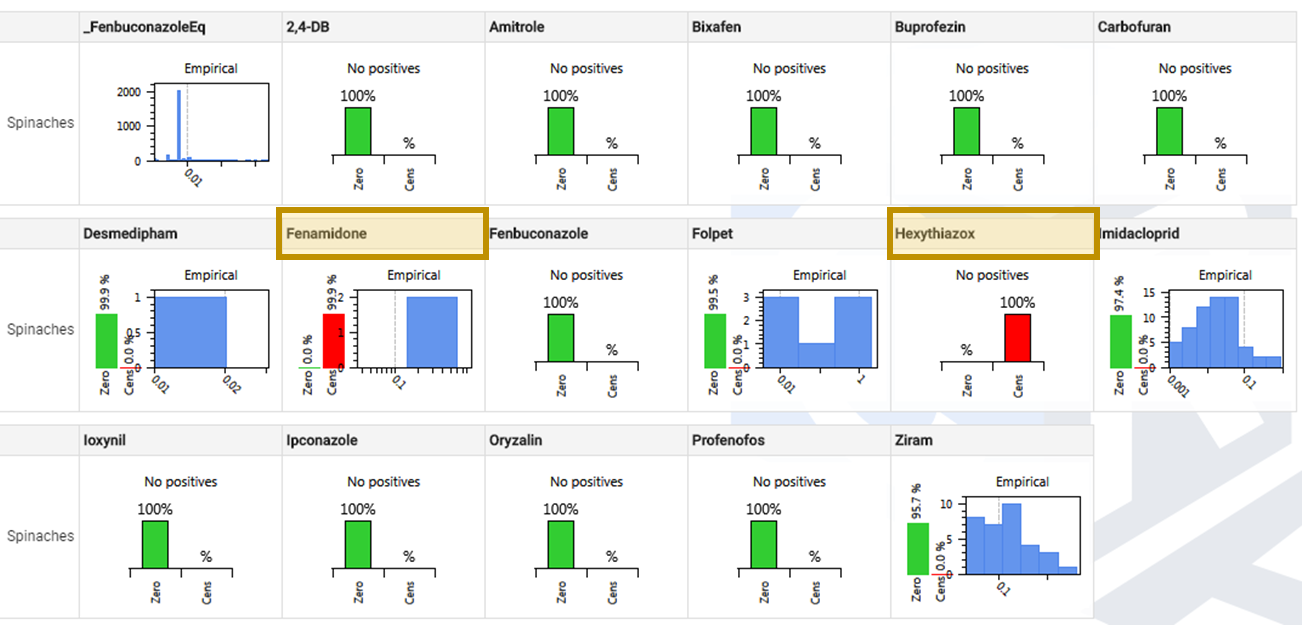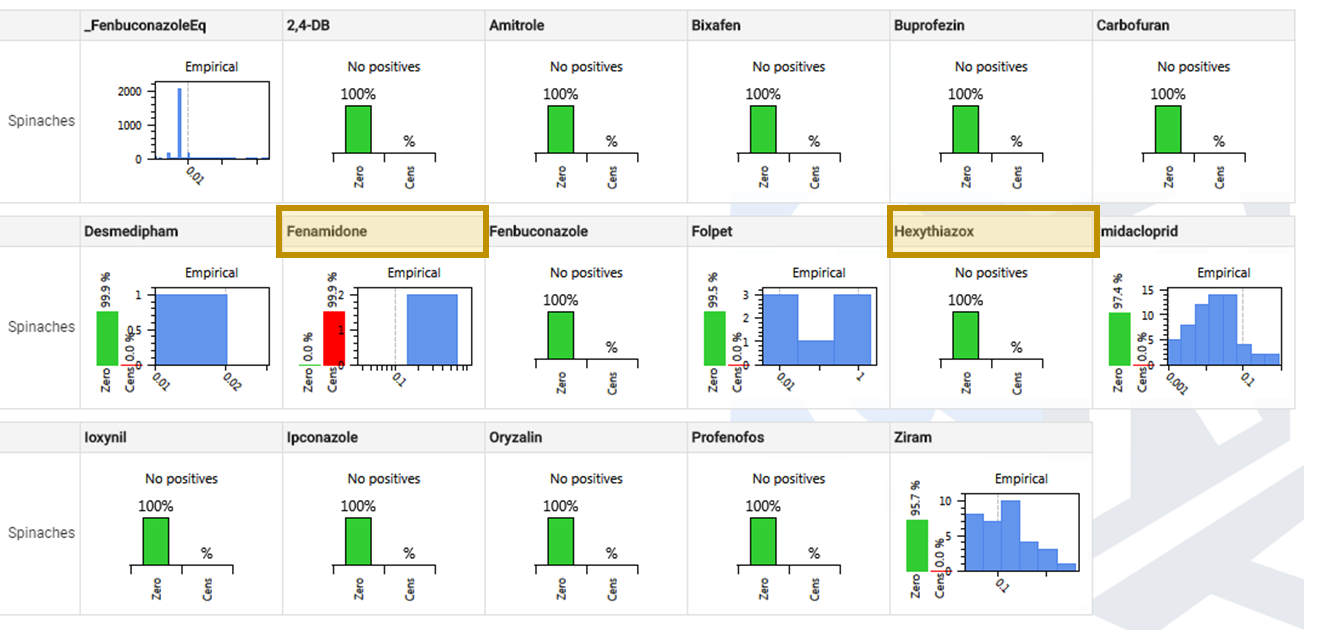Imputation
A complication in concentration modelling occurs if results are reported as being below a limit. Different names may be used for such a limit, e.g. limit of detection or limit of quantification. For the purpose of exposure assessment it is only relevant whether results are reported as a positive value or as a non-detect, therefore we refer to any limit as the Limit Of Reporting (LOR), and any result reported as ‘<LOR’ is termed a nondetect. The value of LOR should always be known for the particular analytical method used.
Non-detects are a very common phenomenon for some classes of substances like pesticides. Non-detects can be handled by replacing them with a given value (imputation), or by incorporating them in a parametric model. In the imputation approach, non-detects (values reported less than LOR) can be replaced in simulations by any value between 0 and LOR * constant.
Imputation may be also dependent on the authorisation status of a substance i.c. whether the use of a substance on a agricultural crop is allowed or not.
In Figure 36 to Figure 39, the various scenarios are displayed. Two substances, Fenamidine and Hexythiazox are indicated with a brown box, these substances are authorized.
No imputation

Figure 36 Tier 1: Non-detects are not replaced. For Fenamidine and Hexythiazox (brown boxes) authorized use is assumed.
Impute all nondetects

Figure 37 All non-detects are replaced by a constant factor x LOR. For Fenamidine and Hexythiazox (brown boxes) authorized use is assumed.

